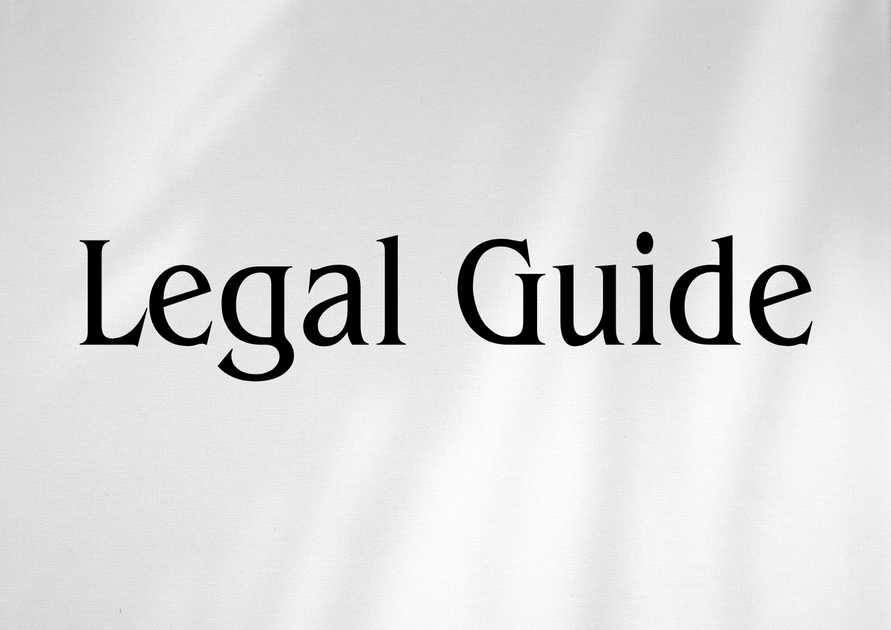Introduction: Navigating DFSA Compliance in the UAE’s Evolving Legal Landscape
As the United Arab Emirates continues to reinforce its global financial standing, the Dubai Financial Services Authority (DFSA) has become an essential pillar in cementing the Dubai International Financial Centre (DIFC) as a preferred jurisdiction for financial services. With a dynamic regulatory environment, amplified by the latest updates and Federal Decrees in 2024 and anticipated regulatory shifts for 2025, establishing and maintaining DFSA compliance ranks among the foremost strategic concerns for new DIFC firms. Effective adherence is not merely about box-ticking—it is a cornerstone for sustainable operations, risk mitigation, and reputation safeguarding in one of the world’s most rigorously regulated financial centers.
This article delivers an expertly structured, thorough compliance checklist for new entities operating within DIFC under DFSA regulation. Developed from UAE legal authorities, including the Federal Legal Gazette, Ministry of Justice, and direct DFSA guidelines, our analysis fuses legal obligations with practical consultancy insight. Readers will gain not only a clear roadmap for compliance but also strategies to proactively address compliance risks and evolving expectations in 2025 and beyond.
Table of Contents
- DFSA and DIFC: Regulatory Framework Overview
- Regulatory Basis: Key Laws and Recent Federal Decrees
- Core DFSA Compliance Obligations for New DIFC Firms
- Practical DFSA Compliance Checklist 2025
- Impact, Risks, and Case Studies
- Compliance Strategies and Best Practices
- Comparative Overview: Pre-2024 vs. 2025 Regulatory Environment
- Conclusion: Shaping the Future of Compliance in the UAE
DFSA and DIFC: Regulatory Framework Overview
What Is the DFSA?
The Dubai Financial Services Authority (DFSA) is the independent regulator of all financial and ancillary services in the Dubai International Financial Centre (DIFC). Established under Dubai Law No. 9 of 2004 (as amended), the DFSA administers regulations aligned with international best practice, focusing on investor protection, market integrity, and systemic stability. For new firms entering DIFC, DFSA oversight is a legal requirement—not an option.
The Significance of DIFC
The DIFC is an independent jurisdiction within Dubai, governed by an English-language common law framework and its own set of commercial laws and courts. It has become the preferred destination for international banks, insurers, asset managers, fintech innovators, and family offices.
DFSA’s remit covers:
- Authorization and licensing of financial institutions
- Prudential regulation (capital, liquidity, solvency)
- Conduct of business rules (KYC, AML, consumer protection)
- Market and listing regulations
- Enforcement and remedial actions
Regulatory Basis: Key Laws and Recent Federal Decrees
Legislative Authority
DFSA operates under the authority of the DIFC’s own legislative framework, set by the Dubai Law No. 12 of 2004 and subsequent amendments, and guided by UAE Federal Law No. (8) of 2004 regarding Financial Free Zones, as well as Dubai Law No. (9) of 2004.
Key Legal References
- DIFC Law No. 1 of 2004 (Regulatory Law) – Establishes the DFSA and sets out its powers
- DFSA Rulebooks (including GEN, AML, COB, PRU, and PIN modules)
- UAE Federal Decree-Law No. (20) of 2018 – AML/CFT regime applicable in all free zones including DIFC (coordinated locally via the DFSA’s AML Rulebook)
- 2024 and Expected 2025 Regulatory Updates – New compliance expectations to enhance investor protection and align with global Financial Action Task Force (FATF) standards
Recent Regulatory Updates: What Changed in 2024–2025?
The DFSA issued several amendments to its regulatory rulebooks, reflecting UAE’s commitment under FATF recommendations and responding to international benchmarking.
The focus areas include:
- Stricter Anti-Money Laundering (AML) controls
- Enhanced Ultimate Beneficial Owner (UBO) transparency
- Expanded ESG and disclosure reporting obligations
- Updated data protection and cybersecurity standards
- Streamlined processes for onboarding and regulatory reporting
(Refer to: DFSA Rulebook portal; UAE Ministry of Justice)
Core DFSA Compliance Obligations for New DIFC Firms
1. Authorization and Licensing
Every firm must undergo a rigorous authorization process. This involves demonstrating a robust business plan, sufficient financial resources, fit-and-proper management, and comprehensive compliance infrastructure. Initial and ongoing notifications to the DFSA are vital.
Practical Example: A new startup bank must evidence capital adequacy, provide a detailed anti-fraud policy, disclose UBOs, and develop a compliance monitoring program from day one.
2. Corporate Governance and Internal Controls
- Appointment of suitable directors and key officers (often including a MLRO – Money Laundering Reporting Officer and Compliance Officer)
- Implementation of board-approved governance and risk frameworks
- Maintenance of up-to-date internal policies and procedures
3. AML/CFT Compliance
- Real-time screening for politically exposed persons (PEPs) and sanctions lists
- Ongoing KYC, CDD, and enhanced due diligence for high-risk clients
- Mandatory suspicious activity reporting (SAR) protocols
- Annual AML training and effectiveness reviews
4. Data Protection and Cybersecurity
- Compliance with the DIFC Data Protection Law No. 5 of 2020
- Appointment of a Data Protection Officer (where required)
- Incident management, breach reporting, and cyber-resilience assessments
5. Regulatory Reporting
- Submission of financial, prudential, and compliance returns
- Ongoing notifications for changes in business or control structure
- Annual returns and ad-hoc reporting as demanded
6. Market Conduct and Consumer Protection
- Fair dealing, clear disclosures, and avoidance of misleading information
- Complaint handling procedures
- Investor or client money segregation and safeguarding
7. Insurance and Capital Requirements
New firms must adhere to DFSA’s prescribed capital adequacy ratios, insurance cover (for relevant firms), and solvency maintenance. Under DFSA’s PIN (Prudential – Insurance Business) and PRU (Prudential – Investment, Lending, and Advisory) rulebooks, these requirements are non-negotiable and regularly reviewed.
Practical DFSA Compliance Checklist 2025
Below is a consultancy-grade compliance checklist. Firms should review and customize this to their risk profile and business model. Visual suggestion: Include an interactive compliance process flow diagram for onboarding and annual review cycles.
| Compliance Area | Action Points | Key Documents/Systems | Frequency |
|---|---|---|---|
| DFSA Licensing & Initial Authorization | Prepare application, core disclosures, UBO details, business plan | DFSA Authorization Pack, Corporate Docs | Once (at onboarding) |
| AML & CFT Checks | Onboard customers post-KYC, ongoing screening, SAR protocol | AML Policies, Client Files, Screening Tools | Initial & ongoing |
| Corporate Governance | Appoint Board, MLRO, submit annual attestations | Board Resolutions, ORG Chart, Attestation Forms | Annual/As needed |
| Compliance Monitoring | Implement risk-based compliance monitoring program | Monitoring Plan, Reports | Quarterly/Annual |
| Regulatory Reporting | Timely filing of returns, notifications for changes | DFSA Portal Submissions | Monthly/Quarterly/Ad hoc |
| Data Protection | Identify & minimize data risk, privacy notices, rapid breach reporting | Data Mapping, DIFC Data Protection Policy | Continuous/Annual Review |
| Financial Controls | Capital adequacy assessment, insurance review, audit | Financial Statements, Insurance Cert. | Annual/Ongoing |
| Training | Mandatory AML, conduct, and cyber training; keep attendance records | Training Logs, Certificates | Annual/Onboarding |
| Recordkeeping | Archive all records securely per DFSA retention rules | Centralized Archive, Policy Manual | Ongoing |
Impact, Risks, and Case Study Analysis
Case Study: Failure to Comply with AML Regulations
Hypothetical Scenario: A fintech firm in DIFC neglects to run enhanced due diligence on new international clients in 2024. As a result, suspicious wire transfers are missed. The DFSA investigates, finds breaches of the AML Rulebook and imposes a penalty of AED 1.2 million, alongside reputational damage and stringent remedial orders.
- Key Lesson: Even inadvertent lapses in compliance processes carry high financial and reputational risks. Robust procedures and ongoing monitoring are non-negotiable.
Risks of Non-Compliance
- Regulatory fines and sanctions (monetary penalties, license suspension, or revocation)
- Individual liability for directors, MLROs, and responsible managers
- Adverse media coverage and loss of market trust
- Barriers to onboarding key corporate clients and investors
Compliance Strategies and Best Practices
General Observations from Recent UAE Enforcement Trends
- DFSA has signaled a zero-tolerance approach to both willful and negligent breaches
- Increasing emphasis on the operational effectiveness—not merely existence—of compliance programs
Actionable Recommendations for New DIFC Firms
- Appoint Experienced Compliance Leadership
Ensure roles of Compliance Officer and MLRO are clear, well-resourced, and have a direct reporting line to the board. - Leverage Technology
Adopt secure RegTech solutions for AML screening, transaction monitoring, and regulatory reporting automation. - Invest in Board-Level Engagement
Compliance should be championed at director and senior management level. Board minutes and policies must reflect this. - Regular Training and Testing
Train employees on evolving regulations and best practices; include scenario-based assessments to test their application. - External Reviews and Legal Audits
Commission annual or biennial independent compliance audits to benchmark practice and identify blind spots.
Visual suggestion: Place a penalty risk heatmap and a compliance lifecycle chart to visually demonstrate the importance of a preventive approach.
Comparative Overview: Pre-2024 vs. 2025 Regulatory Environment
| Compliance Area | Pre-2024 Position | 2024/2025 Updates |
|---|---|---|
| AML/CTF Expectations | Base compliance (KYC/CDD/SAR) with generic UBO screening | Mandatory enhanced due diligence; real-time UBO and PEP monitoring; tighter reporting |
| ESG Reporting | Voluntary disclosures | Mandatory disclosures for certain categories; climate risk reporting |
| Data Protection | DIFC Data Protection Law 2020 compliance | Updated breach notification; stricter cross-border transfer controls |
| Onboarding/Offboarding Controls | Paper-based, basic controls | Mandatory digital trails; robust exit procedures |
| Enforcement | Admonition/warning for first offences | Increased fines; director liability; public naming of breaches |
Conclusion: Shaping the Future of Compliance in the UAE
DFSA compliance for new DIFC firms is a living discipline—continuously shaped by international benchmarks, changing UAE federal law, and ever-rising stakeholder expectations. The 2025 landscape is distinguished by elevated standards in AML, transparency, data protection, and ESG reporting—driven by both legislative amendments and global reputational drivers.
Key Takeaways:
- Regulatory expectations in DIFC are rising: strong compliance culture, tech-driven monitoring, and regular external audits will be crucial.
- Non-compliance now carries steeper penalties and reputational risk. Individual accountability is embedded in new regulatory guidance.
- Adopting a proactive, holistic compliance program—prioritizing risk assessments, scenario-based controls, and continuous upskilling—positions firms for sustainable growth and investor confidence.
Professional legal consultancy input is indispensable in mapping and maintaining your firm’s compliance posture. We advise DIFC entrants to institutionalize robust governance now and monitor the DIFC and DFSA regulatory portals for real time updates. By doing so, your organization will not only meet compliance thresholds but also safeguard opportunity and trust as the UAE accelerates its journey as a top-tier international business hub.




